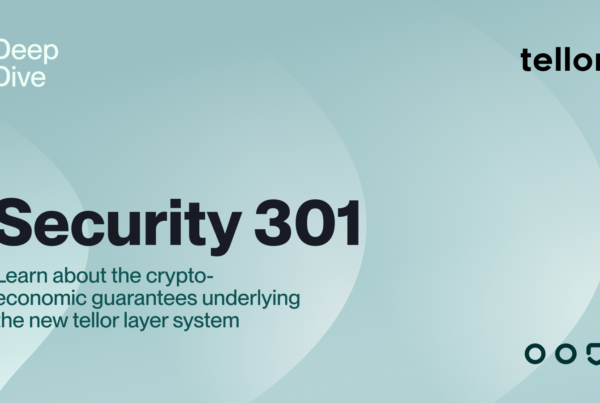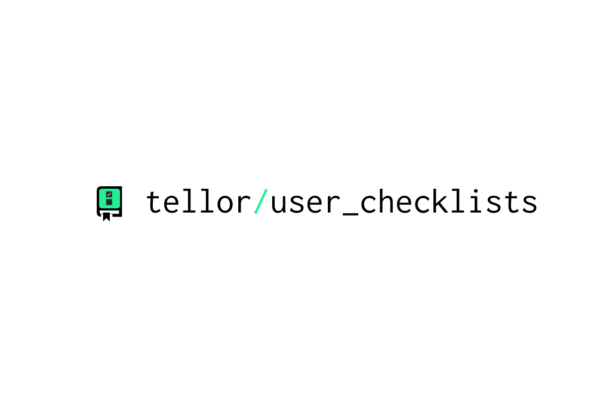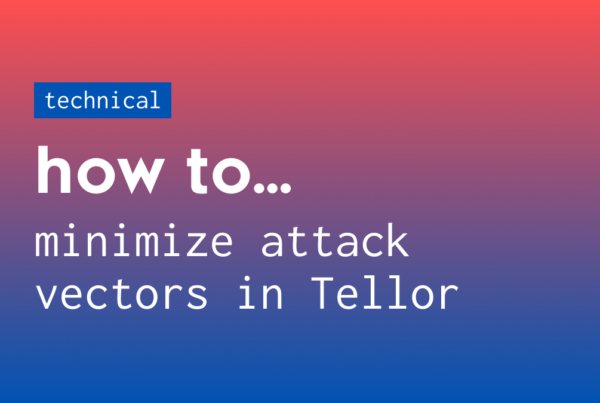Tellor is a decentralized data oracle. This simple definition encompasses a robust system of game theory and economic incentives to encourage user participation in the Tellor network and deter attackers — Tellor’s “tokenomics”. This article explores how Tellor’s native cryptocurrency, Tributes (TRB), and its tokenomic model, create a system that provides truly decentralized data for DeFi applications.
A brief primer on tokenomics
The core purpose of most decentralized tokenomic systems is to align participants with the system’s desired outcomes using financial incentives.
Bitcoin is a great example of a simple yet highly effective tokenomic system. Bitcoin miners are paid in the network’s native cryptocurrency, bitcoin (BTC), for providing work to the network in the form of transaction processing and security services (mining). To ensure that their BTC maintains value, miners must continue to act in the best interests of the network and deter attackers — otherwise, they will go out of business. This creates a positive feedback loop that leads to greater network security and more value for BTC.
The challenge is to take the core principles of Bitcoin’s tokenomic model and generalize it into decentralized networks that perform more complicated tasks and create more useful products. Tellor responds to this challenge through TRB.
Tributes
Tellor Tributes (TRB) are used to incentivize participants and enable the exchange of value within the Tellor network. TRB is created through a proof-of-work (PoW) mining process, whereby miners compete to provide accurate data to the oracle and are rewarded with TRB for their contributions. Tellor miners are additionally required to stake 1000 TRB to mine the network. More on this later.
Tellor made no initial coin offering, there was no pre-mine, and all tokens are created by miners actively participating in the network. These important design decisions were made with true decentralization in mind, rewarding early participants fairly and avoiding TRB monopolization by speculative investors.
There is no fixed supply of TRB, with the total supply increasing as a function of the base reward paid to miners for successful queries. At the time of writing, about 853,000 TRB were in circulation.
Tellor’s PoW algorithm has a difficulty target of about 10 minutes, resulting in roughly 144 queries per day. The rate of growth of supply, therefore, is:
base reward * total daily queries
TRB tokenomic flow
TRB tokens are a core component of Tellor network security, where a higher token price increases the cost of attacking the network. A look at the types of actors in the system, and the ways in which they use TRB, can help in understanding why the price of the token is relevant.
Tellor has four key network participant roles, which are not mutually exclusive. These are:
- Data requesters
- Miners (data providers)
- Disputers
- Voters
TRB are used to:
- Pay for data requests.
- Reward data providers.
- Be staked to allow PoW mining participation
- Initiate disputes
- Vote on disputes
Tellor uses the following basic data provisioning flow:

Superimposing roles on this flow, in which data requesters are pink, miners are blue, and disputers and voters are red, we get:

Now, let’s look at the kinds of interactions these actors have with TRB.
Tellor network participants
1) Data requesters
Data requesters constitute the demand side of the market; they could be DeFi projects such as MakerDAO, Compound and Synthetix looking for price feeds for their smart contracts. These actors pay for data requests by placing a TRB bounty on their request submissions, which get placed in the queue based on the size of the bounty relative to other submissions. Tellor miners are incentivized to take the highest bid for data first, like gas fees in the Ethereum network. Data requesters that want the same data are able to “tip” a request to increase its value and move it up in the queue.
As demand for data increases, theoretically so too does the price of TRB due to the competitive bidding nature of data requests — remember, a higher TRB price is correlated with higher network security. Therefore, user adoption is a key part of Tellor’s security.
2) Miners (data providers)
Miners fulfill data requests from the Tellor network and are required to stake 1000 TRB for the right to do so. Miners can lose their stakes if they are found to be attacking the network (see the disputers section below).
Tellor miners are incentivized to produce accurate data to the network with two key rewards: tips, and the base reward.
Tips are the bounties placed by data requesters to have their data requests fulfilled by miners. Tip amounts grow proportionally to demand, which means that, as the demand side of the market increases, so do the rewards for miners from tips.
The primary reward mechanism for miners, however, is the base reward. This is a payment of newly minted TRB paid to the first five successful miners providing off-chain data to the oracle. The oracle uses only the median of these five values, but each miner receives the same base reward, and tips are divided equally. By selecting the median value, Tellor protects against rogue values to an extent by requiring that at least three-fifths of participants are honest.
Another aspect of the decision to reward each of the five miners equally arises from an understanding of two key threats to the network: race conditions and mirroring.
“Race conditions” occur due to the transparent nature of public blockchains. Values submitted to the network are visible to all participants, which means that those willing to pay higher gas fees can submit their solutions faster than other miners. A gas bidding war decreases the overall reward of mining, which adjusts network difficulty down and decreases the cost of PoW attack, thereby lowering network security.
“Mirroring” is where miners copy the first submitted value, which means only one miner actually checks the price and also centralizes data input to an extent, lowering the overall value and security of the data provided by the oracle.
Tellor’s research indicates that higher rewards for median values lead to both race conditions and mirroring. Rewarding all data providers equally reduces race conditions, but mirroring remains. Interestingly, mirroring occurs mostly when there are no bad actors in the system. The Tellor team plans to submit fake values if an insufficient number of bad actors is present to prevent mirroring.
In isolation, race conditions and mirroring are difficult issues to resolve. Tellor has devised a solution, however, that leads to the long-term honesty of the network. This is called disputes.
3) Disputers/voters
All miners are required to stake 1000 TRB for the right to compete in the PoW challenge and to submit off-chain data, adding a proof-of-stake component to the tokenomic model. Staking allows the imposition of economic penalties against bad actors by taking their stake through the dispute process.
If a value is submitted to the oracle that network participants flag as fraudulent, any TRB holder may submit a dispute for a fee (in TRB) proportional to the number of stakers (at the moment it costs roughly 500 TRB). A disputed miner is frozen for a week while the network determines whether it has committed fraudulent activity.
If the miner is voted to be fraudulent by the network, its 1000 TRB stake is paid to the disputer. If the dispute proves baseless, the disputer is awarded the dispute fee.
This mechanism incentives scrutiny of all values produced by miners while reducing the likelihood of denial-of-service attacks through the submission of false disputes. The long-term trend of this mechanism should be to put TRB in the hands of good actors voting in the best interests of the network.
It is important to note that disputers and voters on disputes do not have to request data nor mine TRB; they can be interested third parties who participate in governance for the sake of the network. Disputes can be voted on by all token holders, which makes the cost of winning a vote:
Token holder supply share * price of tributes
Disputes in a PoS system are essential because 51% attacks are easier to perpetrate on younger chains with lower token value. Tellor combats this by using a unique PoW challenge that the larger chains do not use, making it harder to engage in 51% attacks through hash rate renting.
The dispute system is another feedback loop: as dispute voter participation increases, the security of the network increases, which increases the token price, which incentivizes more participation.
Dev share
Another notable aspect of Tellor tokenomics is dev share, which is the maintenance fee used to fund the ongoing development of the protocol. The development team receives 10% of the base reward, which it uses to:
- Ensure community participation and accurate voting for disputes
- Create and distribute efficient mining software
- Promote adoption of the Tellor oracle
- Create developer tools to easily deploy Tellor in products
- Fund research and improvements to the oracle.
In line with the team’s strong belief in decentralization, this fee will likely reduce over time.
The long-term view
This article has outlined the basic bootstrapping mechanism to incentivize useful network participation and deter attackers — Tellor’s tokenomics. As DeFi accelerates into new markets, the demand for decentralized oracles will continue to grow. This feedback loop will increase network security through token price appreciation and the expulsion of bad actors from the system. Price appreciation leads to greater mining profitability, and fewer tokens are needed for requests to miners. This, in turn, increases token liquidity and brings about price stability.
It is not one possible to create useful decentralized systems at scale without using a system-of-systems approach. Tellor’s tokenomics is a scalable mechanism to bootstrap the network and encourage further adoption, development and participation.
Join us on Telegram and Discord to learn how you can deploy Tellor in your smart contract today!
I love to chat to people in the space, so feel free to reach out on Telegram: @saprophetic
Callan Sarre
Director at Cryptocate



